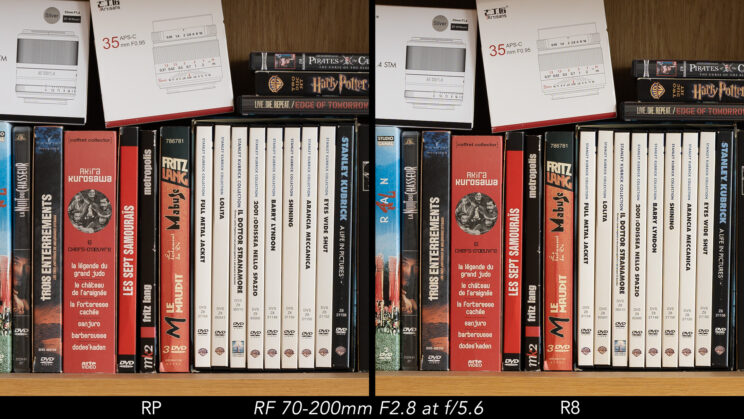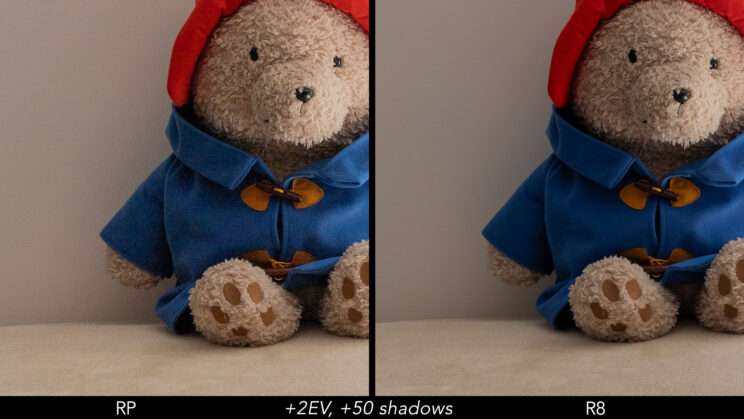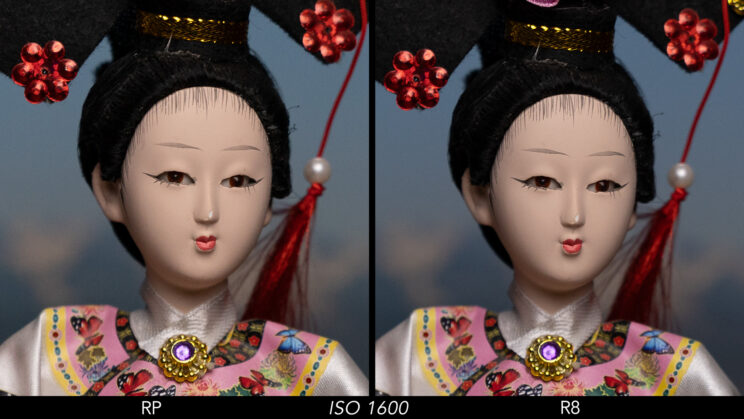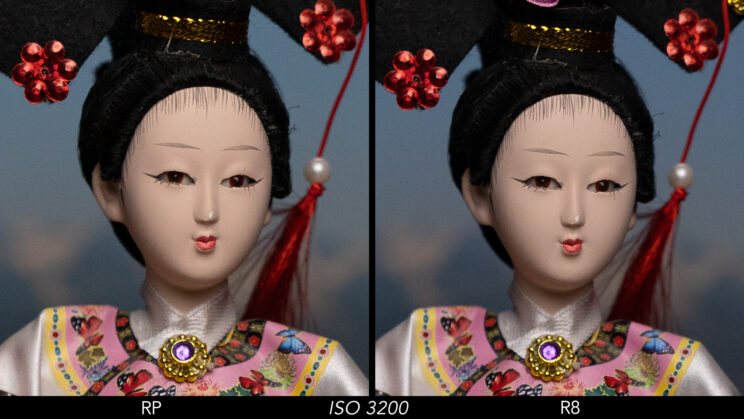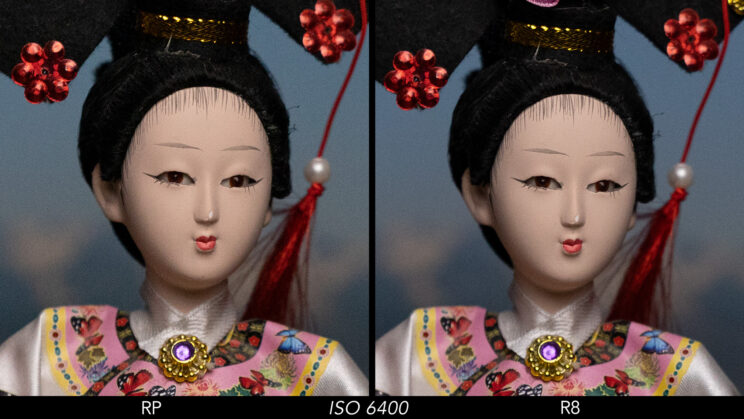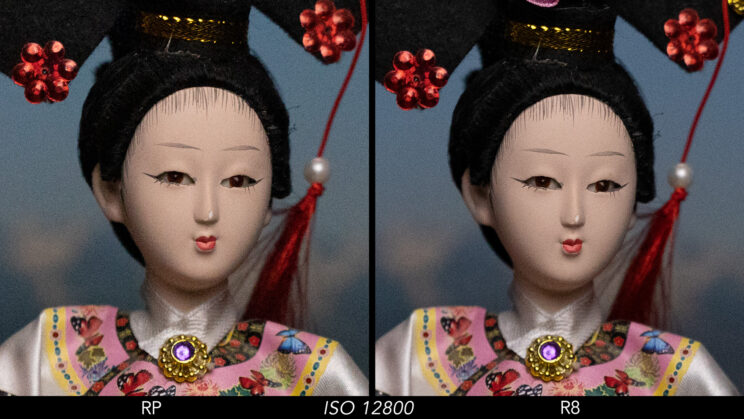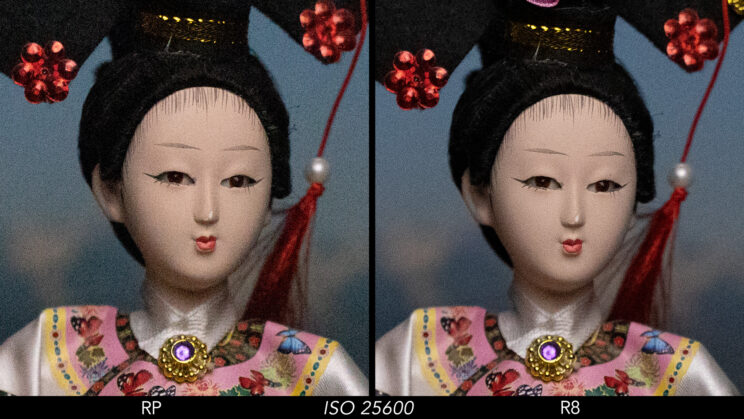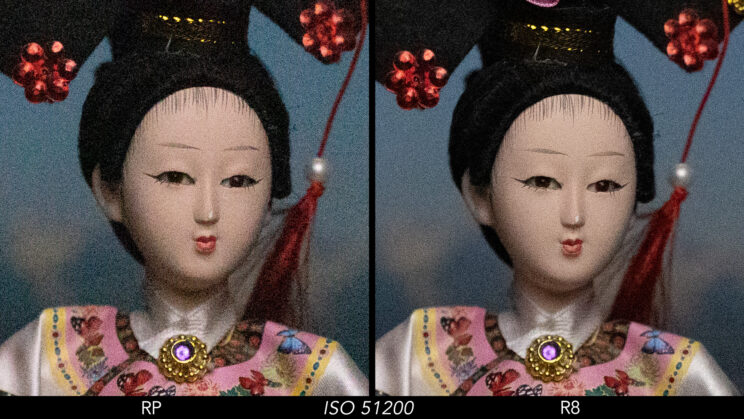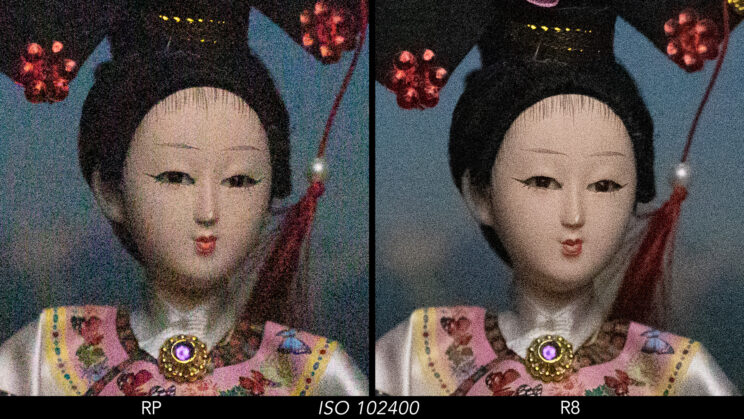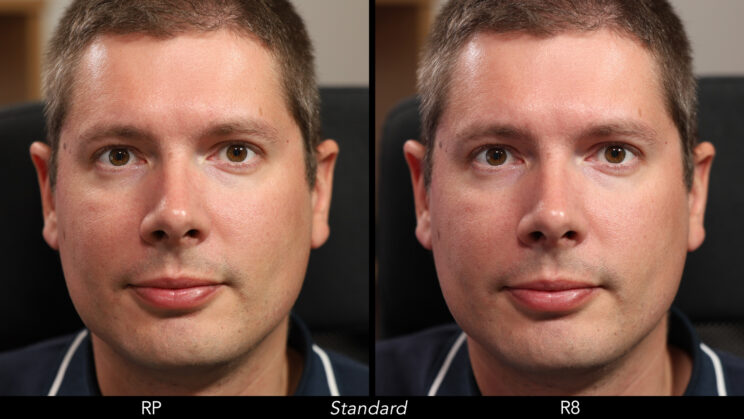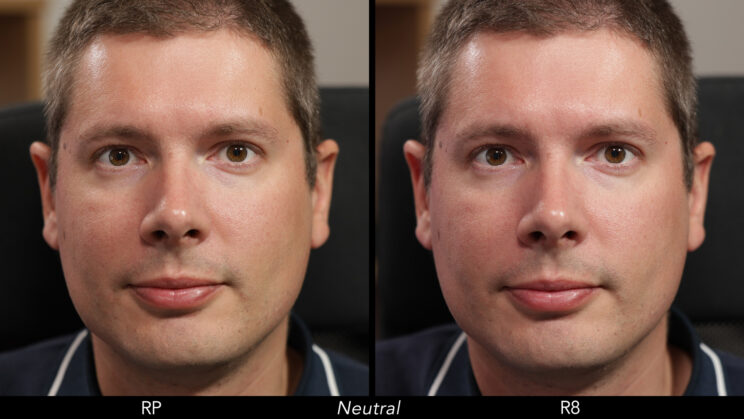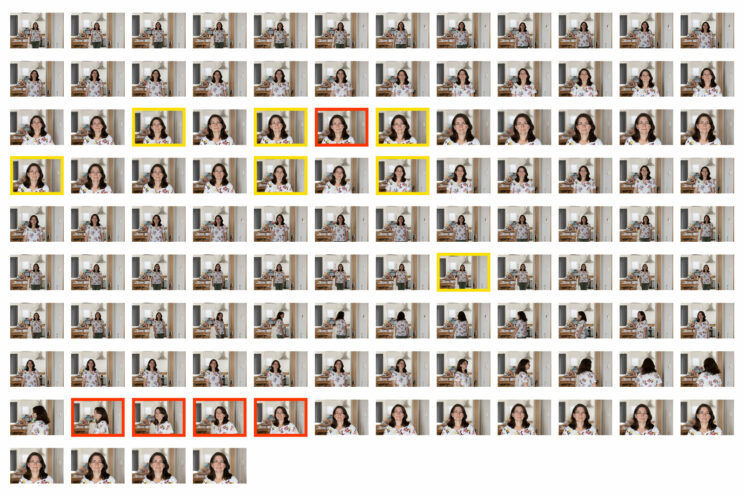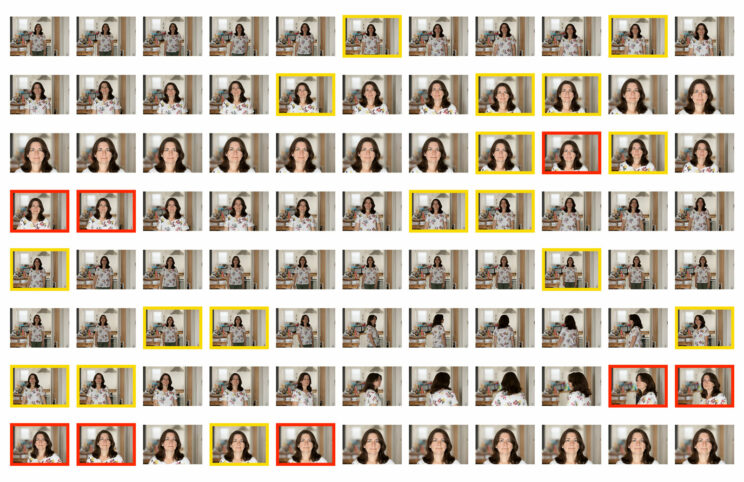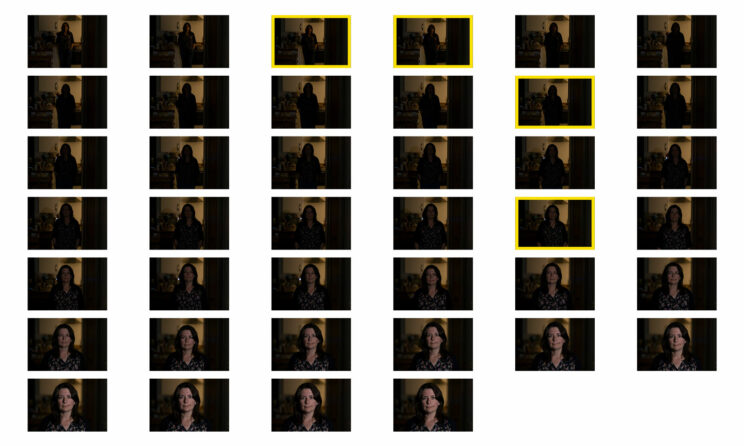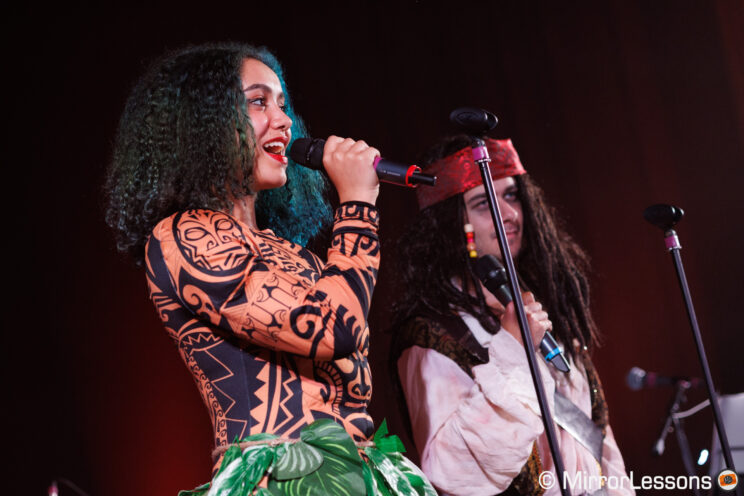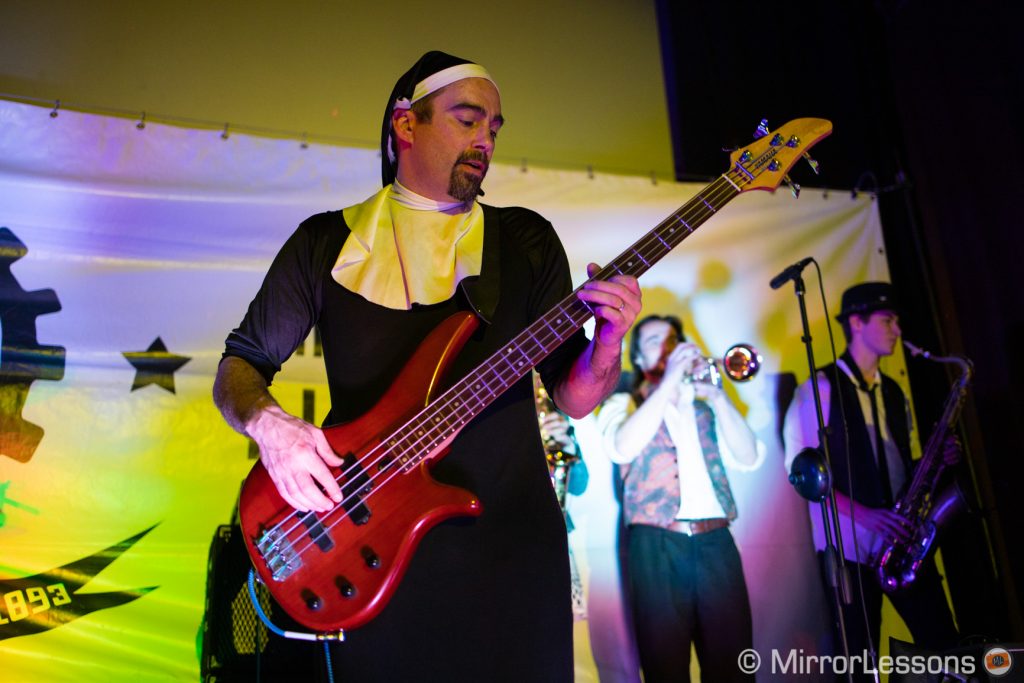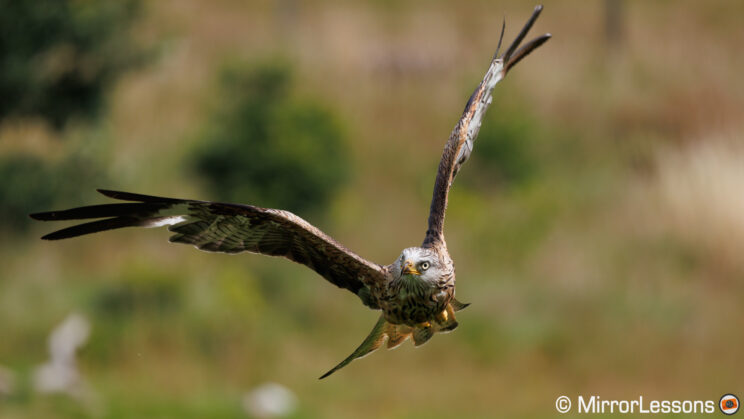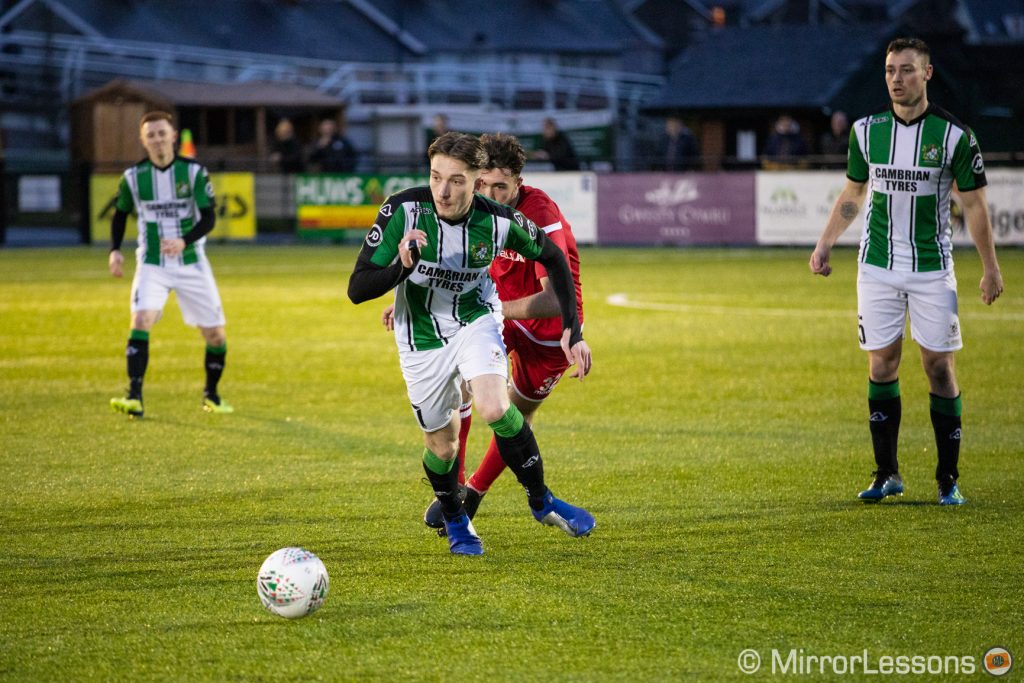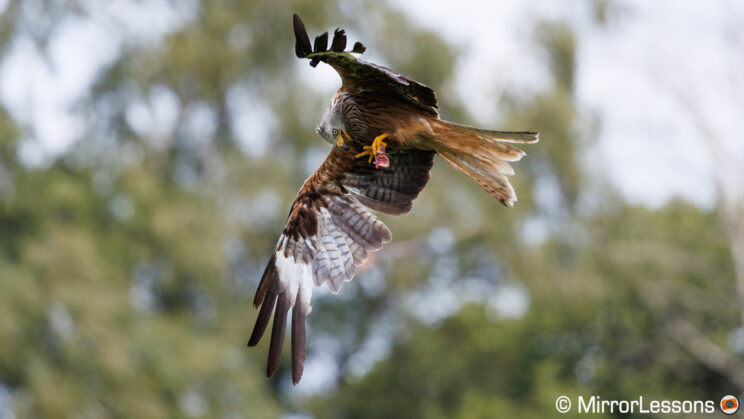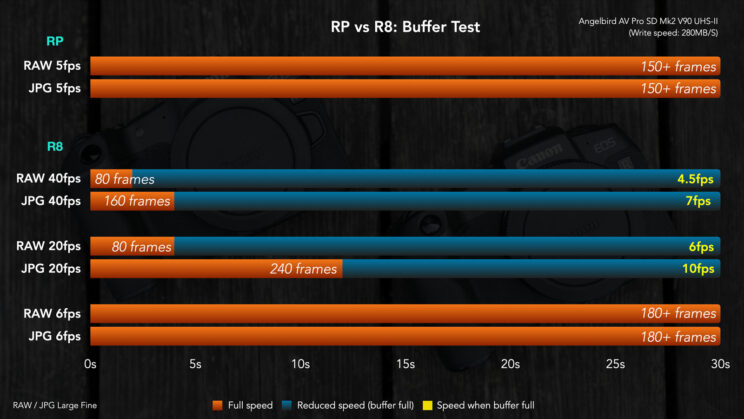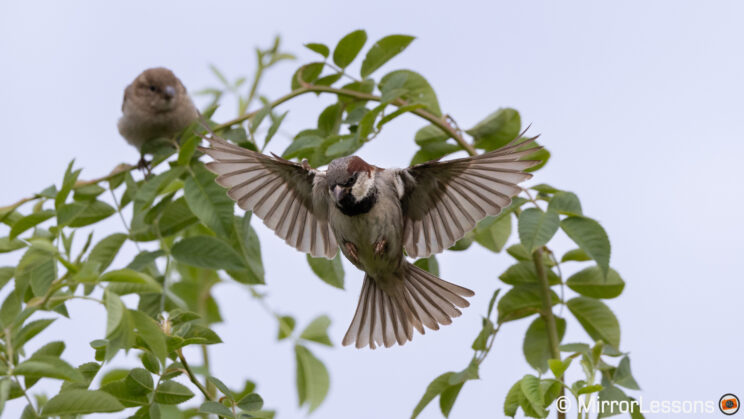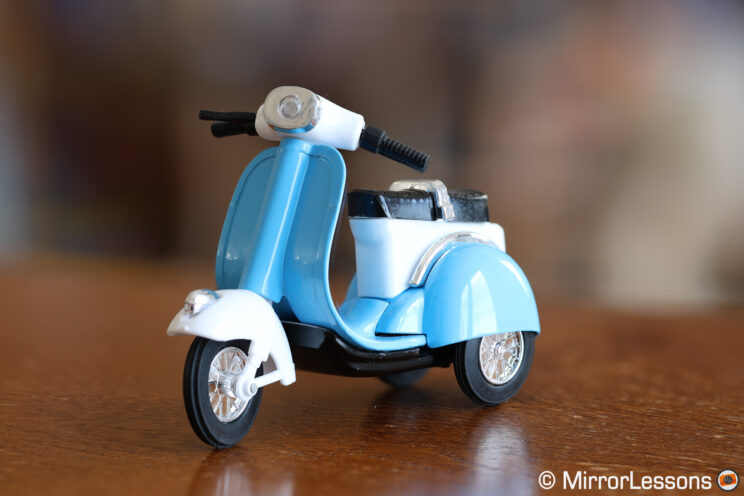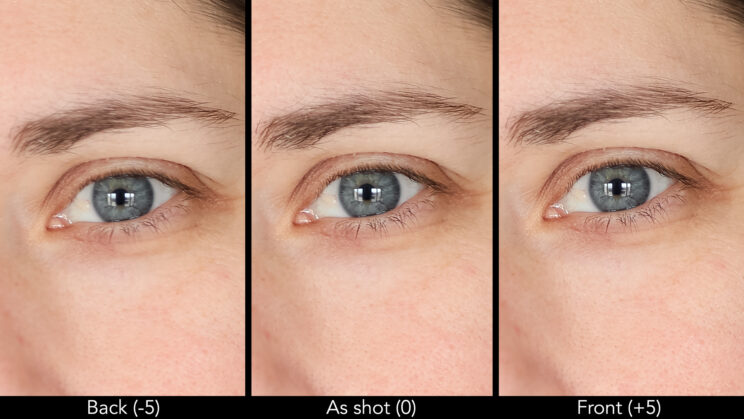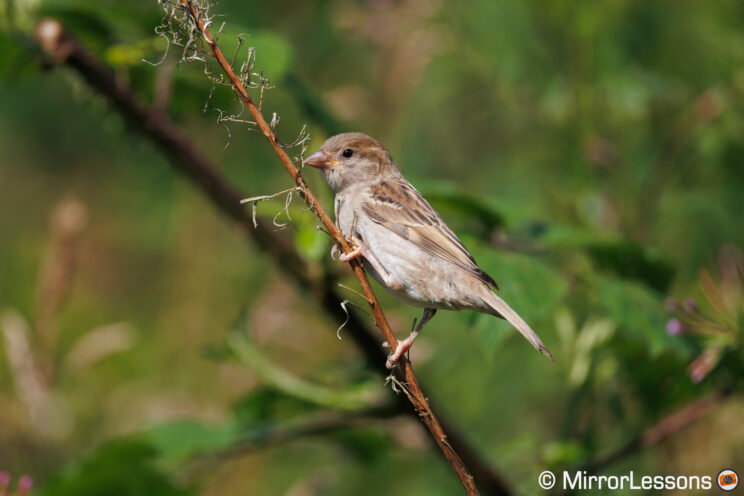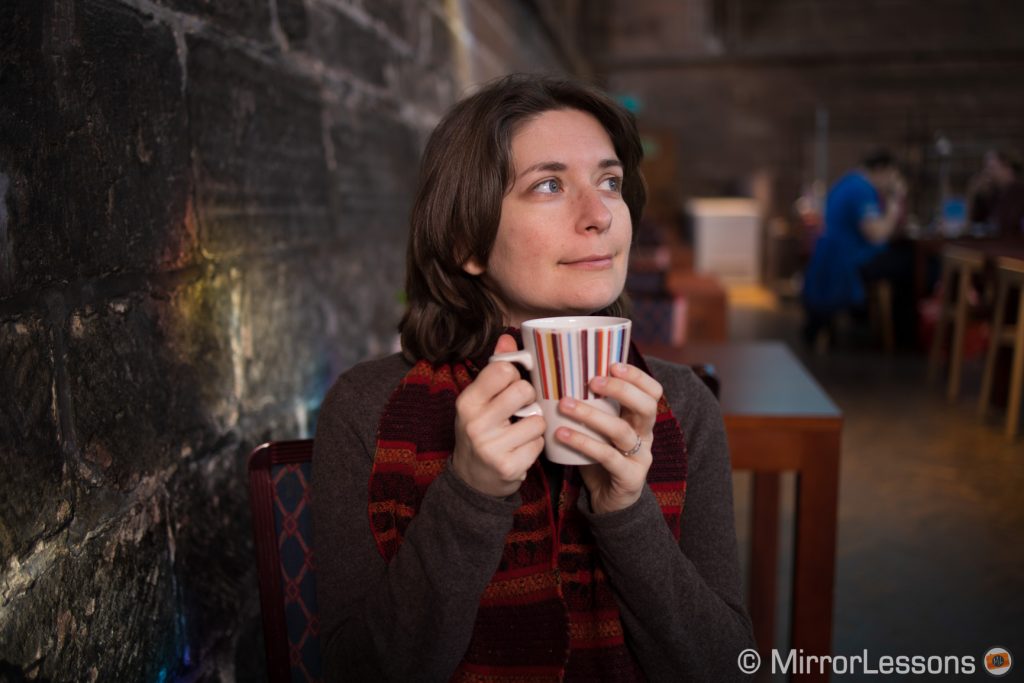The Canon EOS RP was introduced in 2019 as the entry level full frame camera in Canon’s mirrorless range. It had a very competitive price at the time, although the specifications were somewhat disappointing given that it uses an old sensor and slow image processor.
Four years later, Canon has unveiled the R8: it has the same body design, but with much better specifications, as the new camera inherits the same sensor, autofocus and image processor as the R6 mark II.
In this comparison, I’ll explain what the main differences are between the RP and R8 to help you decide which one best suits your needs.
Note: this article has been updated to a full comparison with side by side tests and personal feedback.
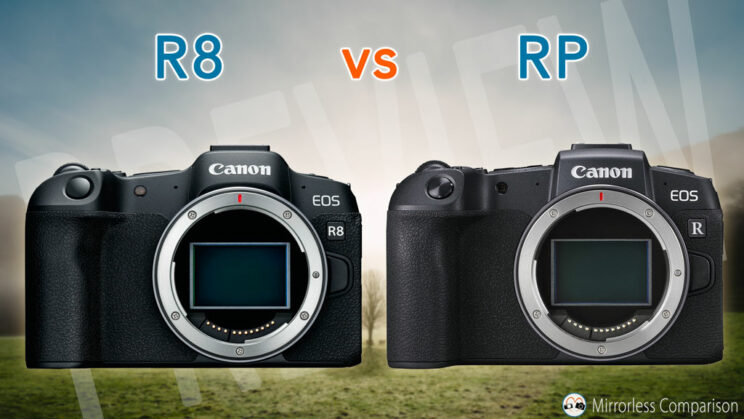
Ethics statement: the following is based on my personal experience with the Canon RP and R8. We were not asked to write anything about this product, nor were we provided any compensation of any kind. Within the article, there are affiliate links. If you buy something after clicking one of these links, we will receive a small commission. To know more about our ethics, you can visit our full disclosure page. Thank you!
Table of Contents
Main Specs
1. Sensor
2. Video
3. Autofocus
4. Electronic Shutter
5. Extra Features
6. Viewfinder and LCD
7. Connections
8. Battery life
9. Design and Custom Modes
10. Price
Conclusion
Main Specs
R8
- Sensor: 24.2MP 35mm format CMOS
- Lens system: RF-mount
- Weatherproof: Yes
- Internal Stabilisation: No
- Autofocus: Dual Pixel CMOS AF II, Subject Detection
- Continuous shooting: 6fps (mechanical), 40fps (electronic)
- ISO Sensitivity: 100 – 102400 ISO (pull 50, push up to 204800)
- Shutter Speeds: 1/8000s to 30s, Bulb, 1/16,000s with e-shutter
- Viewfinder: 0.39-in OLED with 2.36M dots, 22mm eye point, 0.70x magnification
- Rear monitor: Multi-angle 3.0″ LCD (1.62M dots) with touch sensitivity
- Movie recording: 4K up to 60p and 340Mbps, Full HD up to 180p, 10-bit C-Log3 and HDR PQ
- Built-in Flash: No
- Extra Features: WiFi, Bluetooth, Focus Stacking, RAW Burst Mode, Tethering, Time-lapse
- Dimensions: 132.5 × 86.1 × 70.0 mm
- Weight: 461g (including battery and memory card)
- Firmware version: 1.0
- Release: 2023
RP
- Sensor: 26.2MP 35mm format CMOS
- Lens system: RF-mount
- Weatherproof: Yes
- Internal Stabilisation: None
- Autofocus: Dual Pixel CMOS AF with 4,779 points
- Continuous shooting: 5fps or 4fps with focus priority
- ISO Sensitivity: 100 – 40000 ISO (pull 50, push up to 102400)
- Shutter Speeds: 1/4000s to 30s, Bulb
- Viewfinder: 0.39in OLED with 2,360k dots, 22mm eye point, 0.7x magnification
- Rear monitor: Multi-angle 3.00” LCD (1.04M dots) with touch sensitivity
- Movie recording: 4K up to 25fps and 120Mbps, Full HD up to 60fps, video snapshot
- Built-in Flash: No
- Extra Features: WiFi, Bluetooth, Interval-timer, 4K Time-lapse video, Focus Bracketing, Tethering
- Dimensions: 132.5 x 85 x 70mm
- Weight: 485g (including battery and memory card)
- Firmware version: 1.6.0
- Release: 2019

1. Sensor
The R8 and RP feature a full frame sensor (35mm format) with a similar pixel count: 24.2MP for the R8, and 26.2MP for the RP.
The difference in resolution is very small, so, as expected, the quality of detail rendering is pretty similar when using the same high-quality lens.

The old sensor on the Canon RP has never been famous for its dynamic range capabilities. Starting with a two-stop recovery in the shadows, you can already notice some noise in the RP image, although it’s not invasive and certainly manageable. The R8, on the other hand, remains basically noise-free.
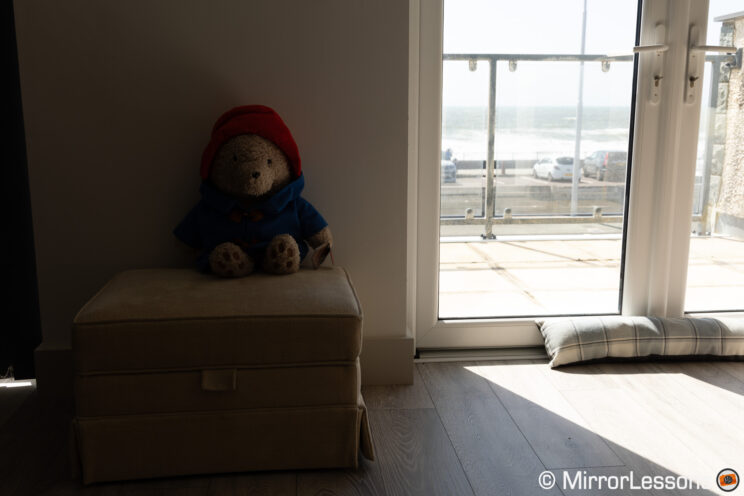
Push the shadow recovery to more extreme levels, and the RP reaches its limit quickly, whereas the R8, while showing some noise, remains usable if you ever need to correct your exposure that much.
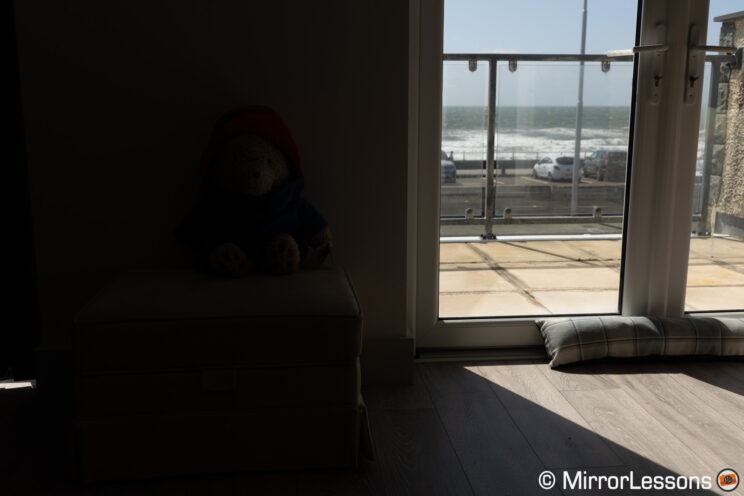
However, with highlights recovery, it is the RP that shows a bit more capability in retaining better contrast and some extra colors.
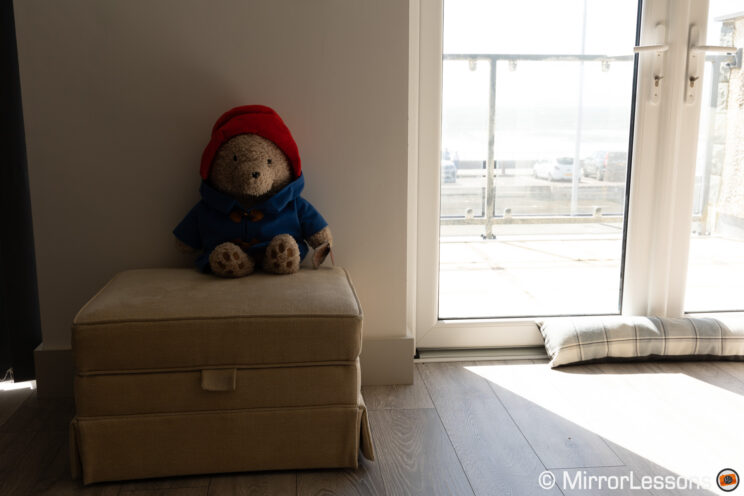
The ISO values between the two cameras are different, with the R8 offering a larger range.
ISO
Normal range
Extended range
R8
100 – 102,400
50 – 204,800
RP
100 – 40,000
50 – 102,400
The RP produces more noise at high ISO, and that becomes noticeable from 6400 and more distinctive from 12800 ISO.
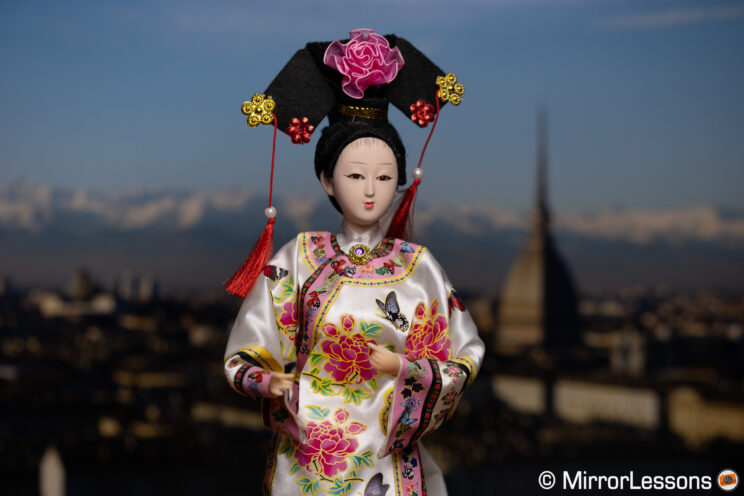
The R8 has an extra stop with the extended values, but noise becomes too visible at that point.
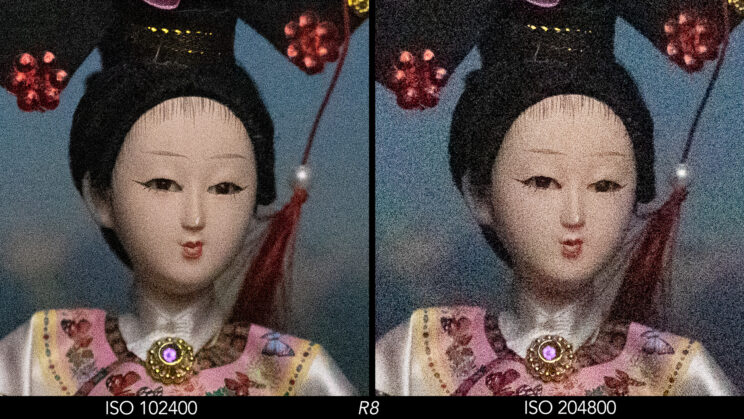
The R8 features a more modern (and faster) image processor, the Digic X, whereas the RP uses an older version (Digic 8). This means that the new camera has more extra features, a faster sensor readout, as well as the latest tweaks made to the Picture Styles and SOOC JPGs.
As you can see in the images below, the RP leans towards more yellow with the Standard and Neutral styles. With the Portrait setting, the R8 has more reds.
Reminder: the links below are affiliate links. If you decided to buy something after clicking the link, we will receive a small commission.
Check prices of the Canon R8 on
Amazon | Amazon UK | B&H Photo | eBay
Check the price of the Canon RP on
Amazon | Amazon UK | B&H Photo | eBay
Second-hand Canon cameras on
MPB US | MPB UK
2. Video
The R8 has superior video capabilities. It can record 4K up to 60p by using all the pixels on the sensor (oversampling from 6K, no crop), which means it delivers excellent quality with sharp details.
The RP can record 4K at 24 or 25p only, and there is a severe crop on the sensor that will alter the field of view significantly. For example, a 50mm lens becomes approximately 87mm when 4K is selected.
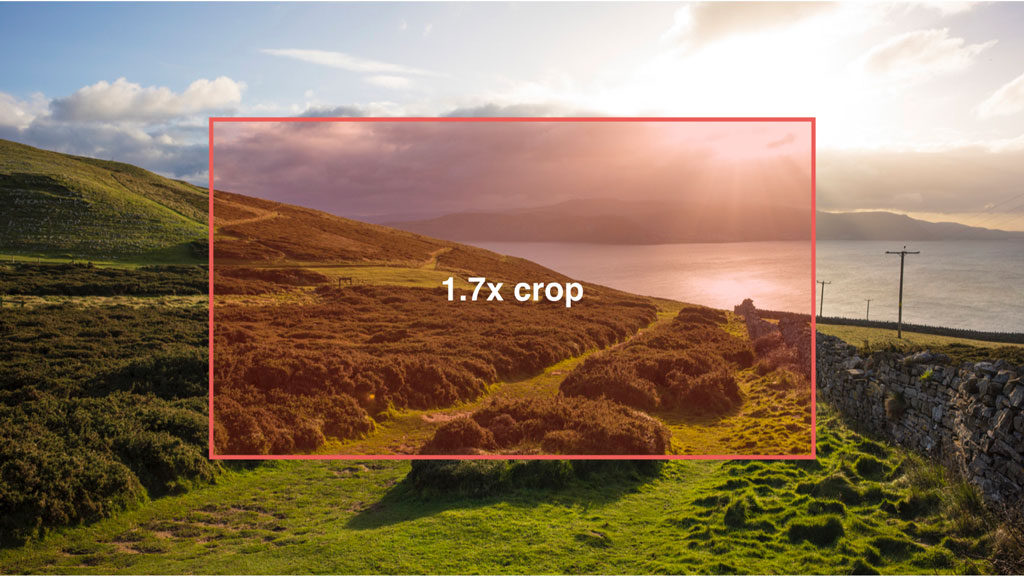
In Full HD, they both record at 60p with no crop. The R8 has the High Frame Rate mode, where you can record up to 180fps, and save a 7.5x slow motion result in camera (when conformed to 24p).
Then we have the quality of the files themselves: the R8 can record 10-bit 4:2:2 internally, when the C.Log3 or HDR PQ profiles are selected. By contrast, the RP doesn’t offer a Log or HDR setting, and only records in 8-bit 4:2:0 internally. This means the R8 saves more colour information.
The bitrate is also higher on the R8, reaching 230Mbps (30p) or 340Mbps (60p). The RP captures an average of 120Mbps at 25p.
The R8 has a faster sensor readout, which means less rolling shutter issues, aka less distortion when moving quickly with the camera.
Both cameras have recording limitations. The R8 is less restricted in 4K 30p, capable of recording for 2 hours without any overheating issues. However, in 4K 60p, there is a 30-minute clip limit, and in my tests, the camera consistently stopped earlier due to internal heat (typically between 23 to 28 minutes).
As for the RP, it can record continuously for a maximum of 30 minutes, regardless of the resolution or frame rate.
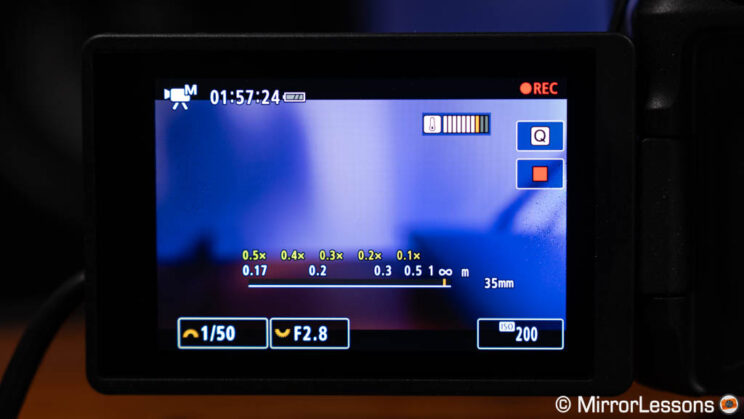
3. Autofocus
The R8 is a much more recent model, and inherits the latest technology when it comes to autofocus, the Canon Dual Pixel CMOS AF II with advanced subject detection algorithms. The camera can recognise humans (body, face, eyes), animals (dogs, cats, zebras, horses, birds) and vehicles (trains, airplanes, cars, motorcycles). It can even prioritise the helmet of a person on bikes and open-cockpit cars.
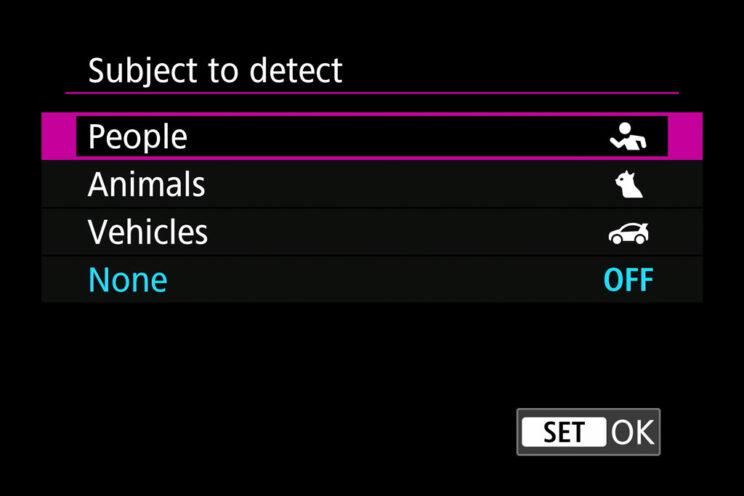
The RP has an older version of Canon’s Dual Pixel phase detection autofocus. It is not as advanced when it comes to subject recognition, and is limited to people (face and eyes).
In my Eye autofocus test, the R8 delivers an almost perfect hit rate, with only a few images being slightly soft.
The RP struggles more but gives a respectable keeper rate with no odd behavior to account for. It just fails to keep focus as accurately and quickly as the R8 does, which is a testimony to the difference in technology between the two products.
It’s important to note that I used a top-of-the-class lens for this test, the RF 70-200mm F2.8 L zoom. A more modest lens will yield a lower score.
Another advantage of the R8 is the sensitivity in low light. It is rated at -6.5EV, whereas the RP is 1 stop and a half less efficient with -5EV. This data is measured at ISO 100 with a f/1.2 lens.
This is where the difference becomes much more accentuated: the R8 maintains a similar performance to the daylight test, with no out-of-focus images and only a few that are slightly soft.
The RP, on the other hand, can’t keep up at all, with only the two frames at the beginning and the three at the end being sharp. It actually stopped shooting at some point because the camera mis-focused completely before the subject came into the light again.
The R8 shines in any situation you throw the camera into. One evening, while taking pictures of a band on stage, I appreciated how precise and reliable subject tracking is. It’s rare for the camera to miss focus or lose the subject, even with the constantly changing light design and some of the performers wearing masks.
I have used the RP at events before, including a concert in the same location, and it’s usable. It doesn’t always detect the subject’s eyes, and it can lack focus precision, but it’s decent enough to capture good shots. You just need to be aware of the limitations and work around them. If you see that eye detection is not working well, use a single AF area instead.
The R8 proved to be an exceptional performer for wildlife as well and scored really high in my birds in flight test. I tried to capture a few shots of birds with the RP, but the slower response and the lag in the EVF make for an unpleasant experience, especially when the subjects are moving fast.
The RP is not a camera designed for fast action, and that won’t come as a surprise for you to read. But I want to stress out that it is not completely incapable either. Back in 2019, when I first tested it, I brought it with me to a soccer game and it gave me a hit rate of 71%, using the EF 70-200mm F4 with the adapter, which is more than what I was expecting.
One last thing you need to be aware of is that in video mode, when recording 4K, the RP uses contrast detection AF instead of the Dual Pixel system. This means slower tracking, less precise results and less reliable performance overall.
Reminder: the links below are affiliate links. If you decided to buy something after clicking the link, we will receive a small commission.
Check prices of the Canon R8 on
Amazon | Amazon UK | B&H Photo | eBay
Check the price of the Canon RP on
Amazon | Amazon UK | B&H Photo | eBay
Second-hand Canon cameras on
MPB US | MPB UK
4. Electronic Shutter and Speed
Having an electronic shutter means that the camera doesn’t use the two mechanical curtains that cover and uncover the sensor when the photo is taken. Instead it uses electronic curtains that power the pixels on and off.
The electronic shutter has allowed camera brands to push the performance of their cameras to new level, like faster continuous shooting speeds, as well as allow the photographer to take pictures in silent mode.
The R8 has a big advantage here: the shutter speed can go up to 1/16,000s, and the continuous shooting goes up to an impressive 40fps.
The RP has an electronic shutter mode, but only when you use one of the Scene modes. You can’t select it when working in Manual mode. Furthermore, it doesn’t give you any benefit, apart from silent shooting.
If you prefer to stick with the mechanical shutter, the R8 remains faster concerning the drive speed at 6fps. The RP doesn’t go beyond 5fps.
Note that neither camera has a full mechanical shutter (2 curtains). Rather they work with the electronic-first curtain mode (front curtain is electronic, rear curtain is mechanical). This gives you a few advantages, like less shutter-shock in some instances, but can also decrease the quality of the bokeh slightly (out of focus areas) with fast shutter speeds. Not a big deal in my opinion, just something to keep in mind.
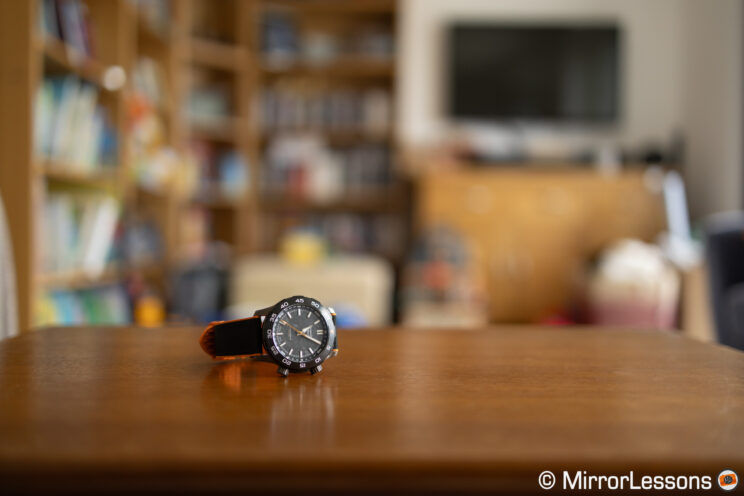
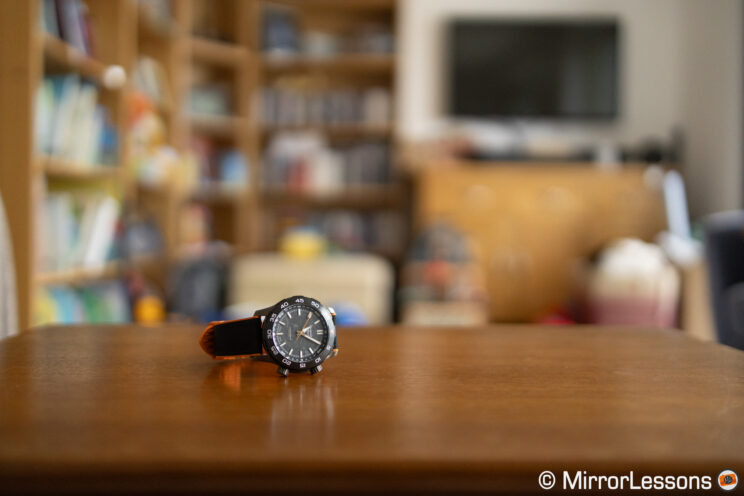
Finally, when it comes to the buffer, neither camera stops or slows down at 6fps or 5fps, with JPG or RAW.
At 40fps for the R8, the performance is less impressive than expected: it can capture 80 RAW images in 2 seconds or 160 JPGs in 4 seconds. The performance improves at 20fps. It’s also worth noting that at 40fps, the R8 takes long breaks of 6 seconds before shooting again.
5. Extra Features
The R8, being a more recent model, includes extra features you won’t find on the older RP camera. Here are the most interesting ones.
- RAW Burst Mode: the camera shoots at 30fps and saves every frame into one big “roll” file on the SD card, rather than saving each photo individually. This also improves the buffer. You can also activate the Pre-Shooting option, allowing the camera to save 15 frames before you fully depress the shutter button. Note that you need to open the “roll” file with the Canon software to extract single images (you can also do it in-camera).
- Focus Bracketing with Focus Stacking: take up to 999 images with small changes in focus distance in order to merge them in post to create more depth of field than a single shot (useful for macro photography, and landscapes). You can also get the result straight in-camera. This function works with the electronic shutter, so flash is not available.
- Focus Breathing Compensation: eliminates the small “zoom effect” that occurs on most photography lenses when changing focus from infinity to the minimum distance. Note that this only works with select RF lenses.
- Dual Pixel RAW: the R8 saves a special RAW file with depth information from the autofocus technology. You can then make micro adjustments in post with the Canon Digital Professional app, like adjusting the focus point or bokeh.
- Multi-function shoe: the R8 has a newly developed hot-shoe that has more electronic communication with the camera, allowing you to record digital audio up to 4 channels for example. This also means you don’t need to connect a cable to the side of the camera. Note that this is valid with select microphones only, compatible with this technology.
- High-Frequency Anti-Flicker: allows you to select the correct shutter speed with a higher degree of precision to eliminate banding caused by LED lights and other sources. It works with the electronic shutter and in video mode.
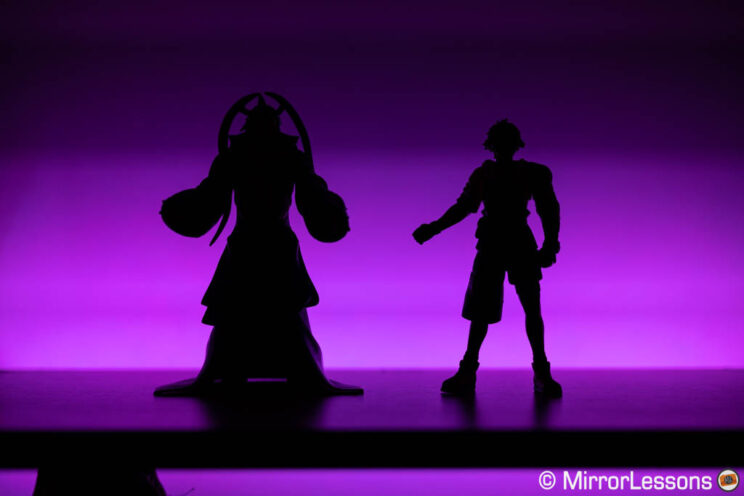
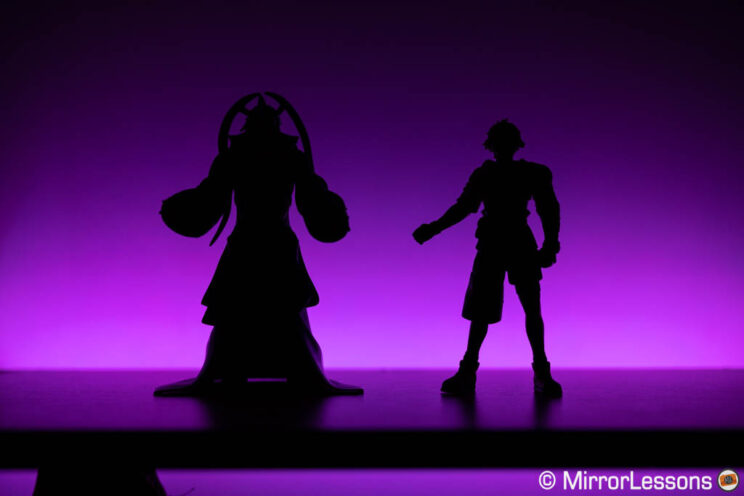
- Detection only AF: when recording video, you can prevent the camera from re-focusing on the background when the subject goes outside of your composition.
- Wi-fi and Bluetooth to connect to your smartphone, transfer photos or remote control your camera.
Note that neither camera has in-body image stabilization, so you must rely on lenses with optical stabilization. For video, you can combine optical stabilization with Digital IS.
Reminder: the links below are affiliate links. If you decided to buy something after clicking the link, we will receive a small commission.
Check prices of the Canon R8 on
Amazon | Amazon UK | B&H Photo | eBay
Check the price of the Canon RP on
Amazon | Amazon UK | B&H Photo | eBay
Second-hand Canon cameras on
MPB US | MPB UK
6. EVF Refresh Rate and LCD Resolution
The two cameras have a very similar viewfinder:
- 0.39-in size
- OLED panel
- 2.36M dots of resolution
- 0.70x magnification
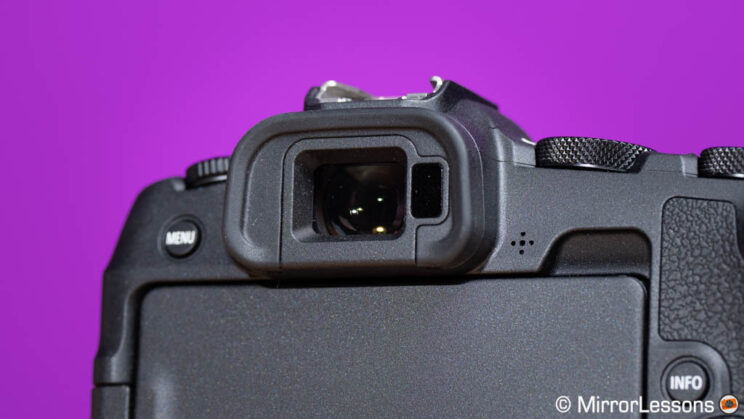
The only difference is the frame rate: that of the R8 goes up to 120fps, whereas the one on the RP model works at around 60fps. A faster frame rate is useful when following very fast action.
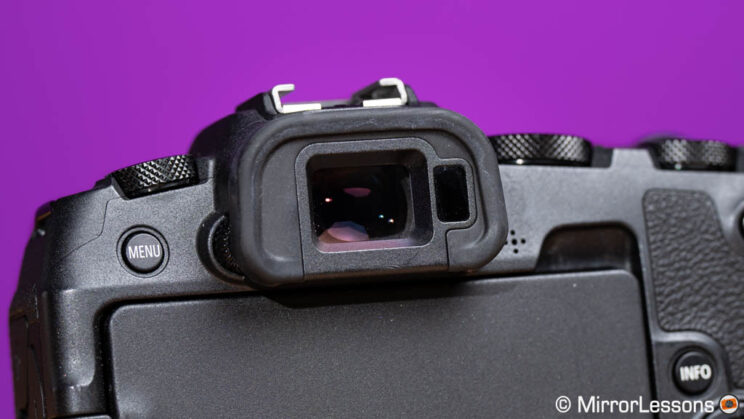
As for the rear monitor, they both have an LCD with a multi-angle mechanism to orient it in different positions and flip it 180˚ to the side. The R8 version has more resolution: 1.62M vs 1.04M dots.
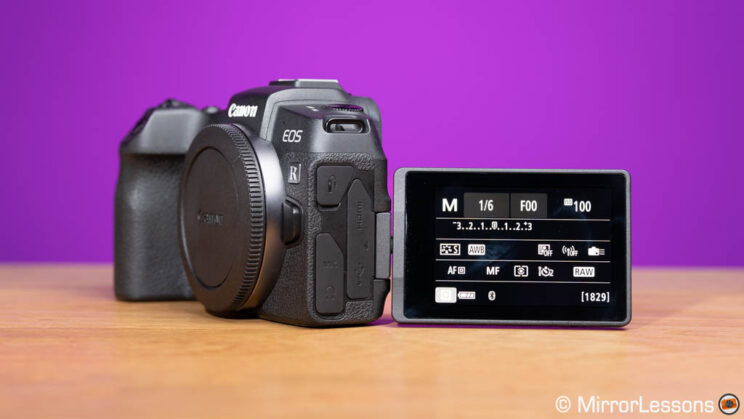
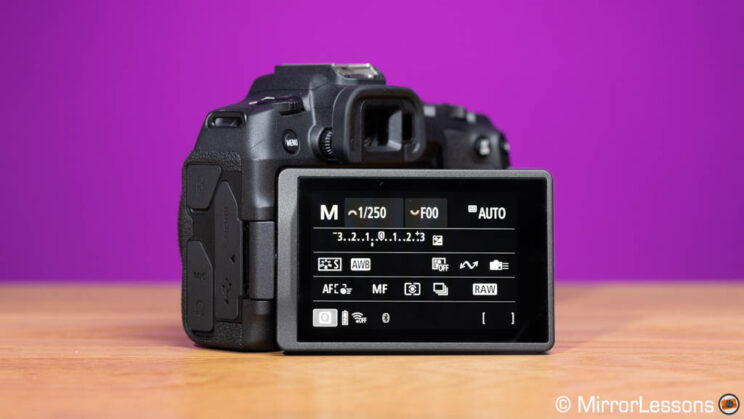
7. Card and Connections
Both cameras feature a 3.5mm mic input and headphone output, as well as Micro HDMI output.
They also have a USB Type C connection, but the one on the R8 is much faster with a maximum transfer speed of 10Gbps, whereas that of the RP works at 480Mbps (USB 2.0).
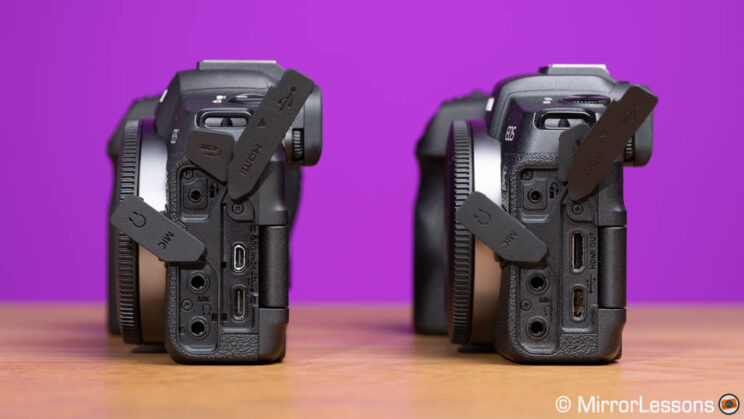
The USB port gives photographers more possibilities on the new camera: for example, you can use the R8 as a plug-and-play webcam without any additional software required.
With the RP, you need to install the EOS Webcam Utility plugin on your desktop computer for it to be recognised. See my article about How to use the Canon RP as a webcam to find out more.
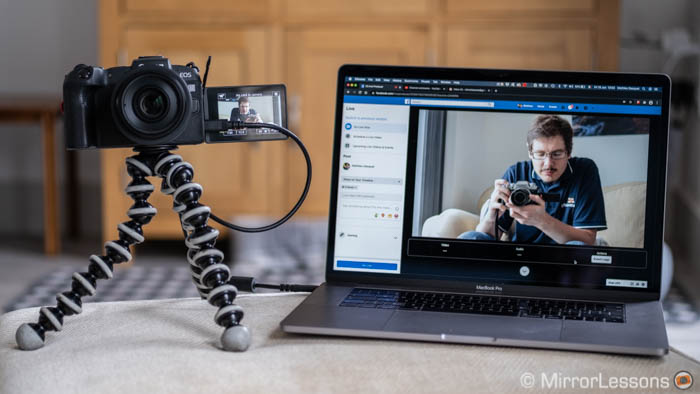
Each model has only one UHS-II card slot located at the bottom in the battery compartment.
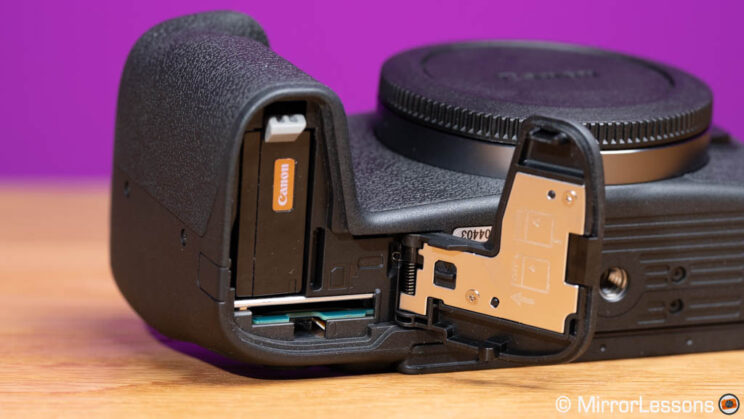
Reminder: the links below are affiliate links. If you decided to buy something after clicking the link, we will receive a small commission.
Check prices of the Canon R8 on
Amazon | Amazon UK | B&H Photo | eBay
Check the price of the Canon RP on
Amazon | Amazon UK | B&H Photo | eBay
Second-hand Canon cameras on
MPB US | MPB UK
8. Battery Life
The R8 and RP use the small LP-E17 battery unit.
The new camera has a better rating when using the LCD monitor, with 370 shots per charge. It’s lower when using the viewfinder (220 shots).
The RP has a rating of 250 frames, whether you use the EVF or LCD screen.
As always, you’ll be able to get better results in the real world (these ratings are always pessimistic), but the R8 does hold a slight advantage, even when stressed out.
Both cameras can be charged via USB, but only the R8 can be powered when the camera is on.
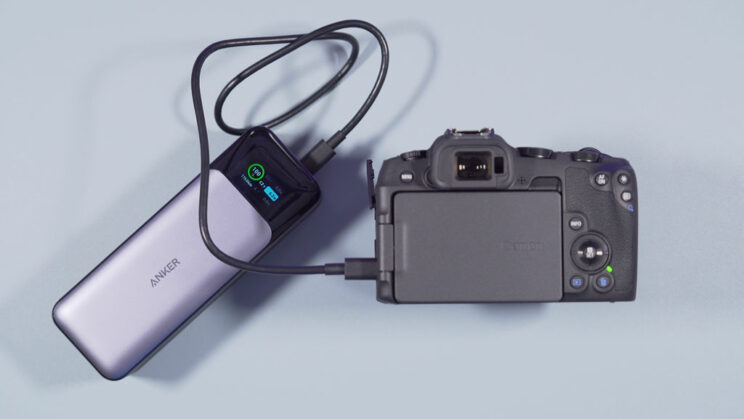
9. Design and Custom Modes for Video
The two cameras have a very similar design, almost the same dimensions, and little difference in weight:
- R8: 132.5 × 86.1 × 70.0mm, 461g
- RP: 132.5 × 85.0 × 70.0 mm, 485g
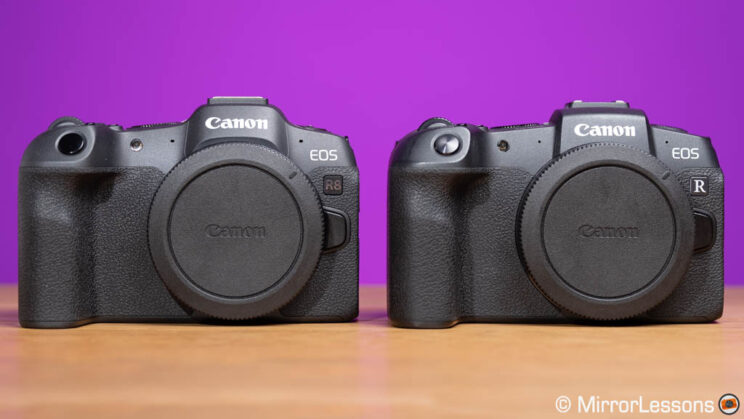
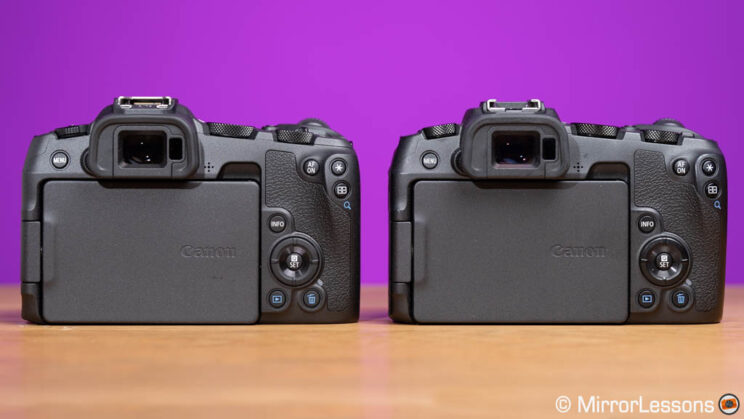
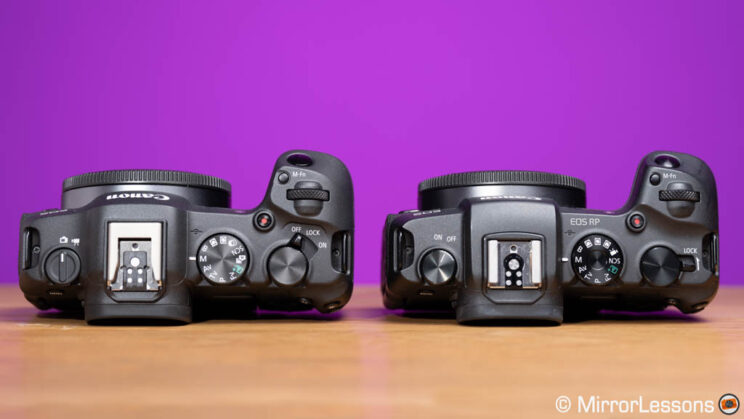
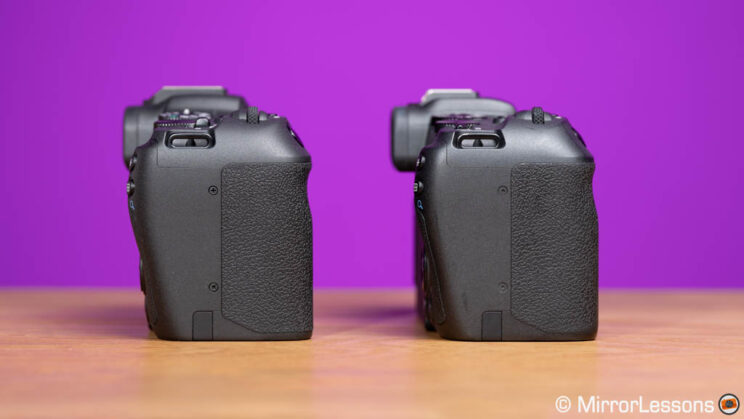
The button layout is mostly the same, but the R8 has a photo/video switch on the top left area of the camera, whereas the RP has the on/off switch in the same position. To go to video mode on the RP, you use the main shooting mode dial on top.
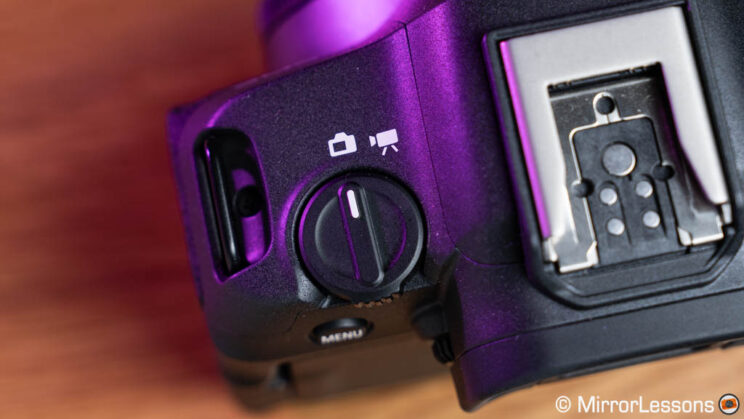
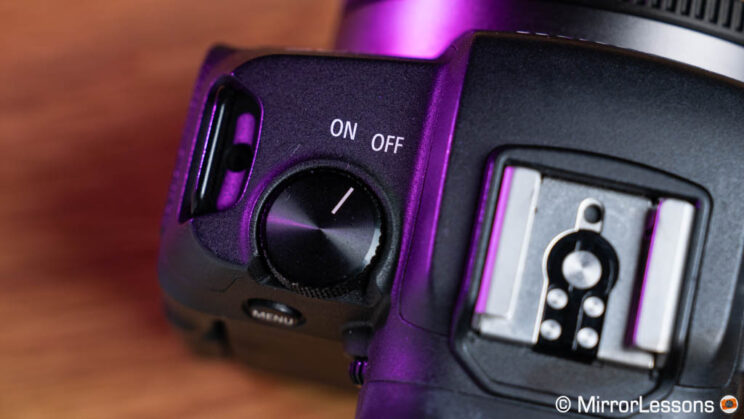
This gives an advantage to the R8 because you can use the main dial to change shooting modes whether you are in photo or video mode, and you can also use the Custom Modes (C1, C2) for video, and not just photos. That said, the RP has three custom modes, one more in comparison to the newer camera.
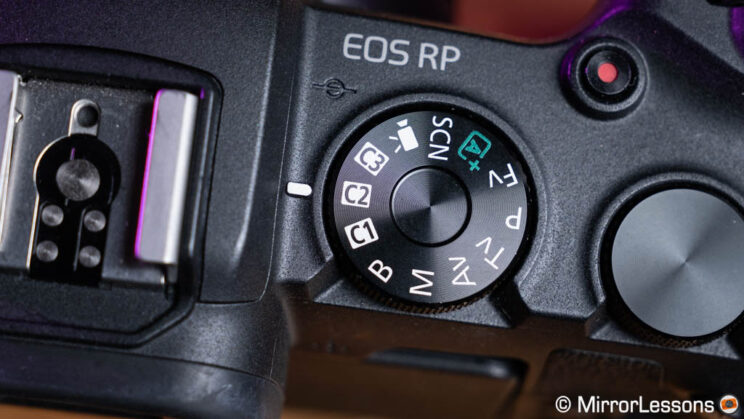
10. Price
The R8 is has being launched with the price of $1500, £1500 or €1800 for the body only. You can add $200 / £200 / €200 for the 24-50mm kit lens.
The RP “body only” can be found for $1000, £900 or €800 in retail stores. You can also find it second-hand for around $750 / £600 / €650.
What is interesting on the RP, in addition to its lower price, is that the kit option is the 24-105mm F4-7.1, so you get more zoom range for an extra $300 / £270 / €300. I suspect the same lens will be offered with the R8 in the future.
Reminder: the links below are affiliate links. If you decided to buy something after clicking the link, we will receive a small commission.
Check prices of the Canon R8 on
Amazon | Amazon UK | B&H Photo | eBay
Check the price of the Canon RP on
Amazon | Amazon UK | B&H Photo | eBay
Second-hand Canon cameras on
MPB US | MPB UK
Other comparisons you might be interested in:
Conclusion
To me, it is clear the R8 is the best camera: it has much more modern technology that allows you to capture better photo and video quality. It has a more intelligent and faster autofocus performance, much quicker continuous shooting speed and a great amount of extra features. If money is not an issue, don’t hesitate, choose the R8.
The RP has one main advantage: it is less expensive, and in some countries that difference is almost half the price, something that’s hard to ignore. So if you don’t really care about the latest specs, and you’re happy to work around the limitations of the older model, there is no doubt it’s a good camera to start with, and what you save on the cost can be invested in a better lens for example.
Reminder: the links below are affiliate links. If you decided to buy something after clicking the link, we will receive a small commission.
Check prices of the Canon R8 on
Amazon | Amazon UK | B&H Photo | eBay
Check the price of the Canon RP on
Amazon | Amazon UK | B&H Photo | eBay

